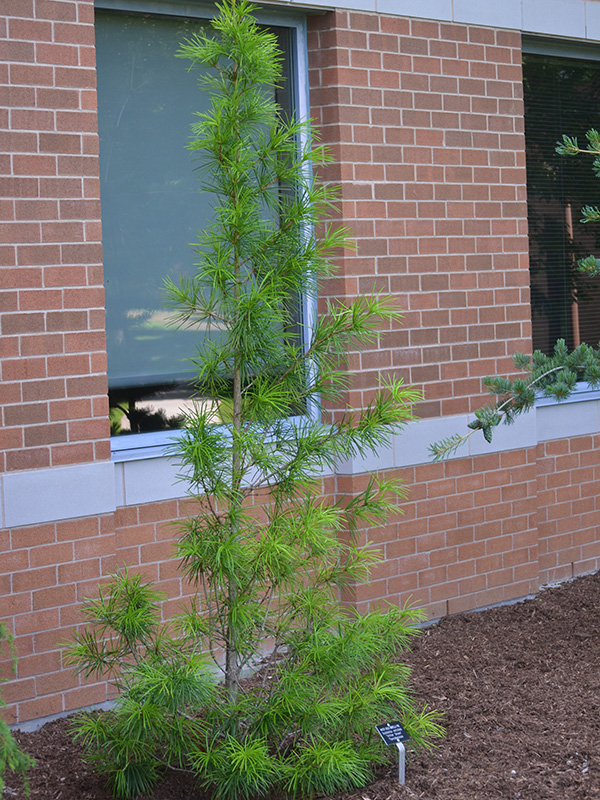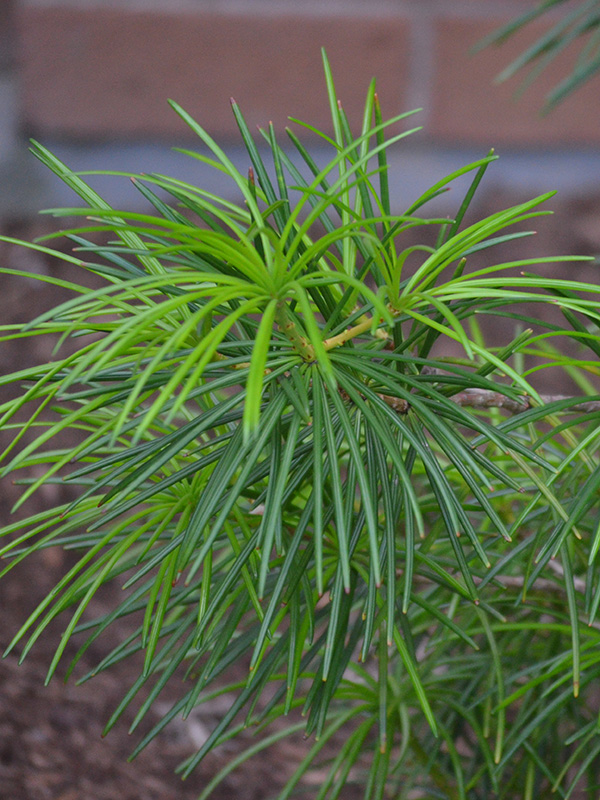| General Description | A large slow-growing cultivar with distinctive rich-green needles that turn to an almost blue-green. It has a tropical appearance with a refined pyramidal shape. |
| ID Characteristic | Dark green pine-like needles with a glossier appearance. The needles are arranged in whorls on the branches and are tufted together facing upward, giving the evergreen an appearance similar to a wind-distended umbrella skeleton. |
| Shape | Narrow, conical, and densely branched giving it a pyramidal look. |
| Landscape | It can be used as an accent or specimen planted in a rock garden or border. Its unusual texture makes it a valuable addition to gardens. It is tolerant to salt and is somewhat tolerant to urban pollution. Plant it in a relatively sheltered location. |
| Propagation | Warm stratification for 100 days in moist sand at 17-21°C, or cold stratification for 90 days in moist, acid peat at 0-17°C. Cuttings may also be taken. |
| Cultivation | It is particular about its soil conditions, prefers rich, acidic soils with full sunlight. Younger plants should be wrapped with burlap in the winter to protect from extreme cold, dry winds and excessive drought until it is well established (2-3 years minimum). |
| Pests | No serious insect or disease problems. |
| Notable Specimens | There are not any specimens that are located in the region, this is due to Ontario being at the edge of its hardiness zone. There are some specimens at the University of Connecticut, where its creator Dr. Sid Waxman first originated the tree. |
| Habitat | This plant is not reliably hardy in our region since the species originates from Japan. It prefers well-drained soil with partial to full shade. It grows considerably better in warmer conditions. |
| Bark/Stem Description | Thin, nearly smooth, dark orange to brick red, exfoliating in long strips. Not considered particularly outstanding because it is usually hidden by the foliage. |
| Flower/Leaf Bud Description | The buds are ovoid, 2-3 mm across and are only produced at the tips of branches. |
| Leaf Description | The needles are bright light blue that turn to grey blue, the shoots radiate at a 45� angle. The needles give the appearance of an upside-down umbrella skeleton. |
| Flower Description | A monoecious flower; female solitary, terminal and subtended by a small bract. The flowers are not ornamentally significant. |
| Fruit Description | Cones oblong-ovate, upright, 50-100 mm long, 25-50 mm wide, opening to around 75 mm wide. Scales with re-flexed margins; cones are green at first, turning to brown the next year. Each scale bears 5-9 2-winged seeds. |
| Colour Description | The name "Wintergreen" describes the colour well, needles have a rich-green look that can turn to shades of blue to light-grey. The bark is a dark orange-red. |
| Texture Description | Medium coarse; considered one of the nicest-looking conifers for textural effects and specimen planting. |

